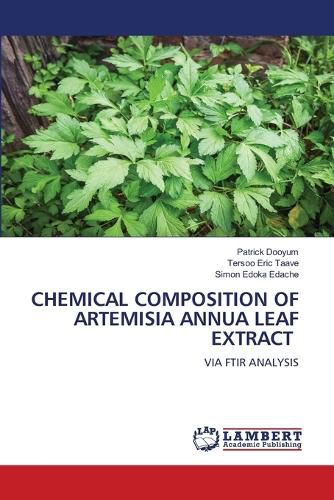Readings Newsletter
Become a Readings Member to make your shopping experience even easier.
Sign in or sign up for free!
You’re not far away from qualifying for FREE standard shipping within Australia
You’ve qualified for FREE standard shipping within Australia
The cart is loading…






This study employed Fourier Transform Infrared Spectroscopy (FTIR) to evaluate the chemical composition of the aqueous leaf extract of Artemisia annua, a plant recognized for its medicinal properties. Conducted at Joseph Sarwuan Tarka University and the University of Ibadan, Nigeria, leaves were collected, authenticated, and processed through soaking in sterile distilled water and methanol. FTIR analysis identified several key functional groups, including a hydroxyl group at 1028.75 cm? (1) (indicating alcohols), an alkene at 1073.47 cm? (1) (suggesting diethyl ether), nitriles at 1267.29 cm? (1) (e.g., methylamine), ethers at 1319.48 cm? (1), amines around 1401.48 cm? (1), and possible carboxylic acids at 1621.39 cm? (1). Additional peaks indicated the presence of methyl isocyanate and benzonitrile. The findings confirm that the aqueous leaf extract of Artemisia annua is rich in bioactive compounds with diverse functional groups, supporting its traditional medicinal applications and suggesting potential uses in pharmaceuticals and agriculture. Future research should focus on isolating these compounds and exploring their biological activities and applications.
$9.00 standard shipping within Australia
FREE standard shipping within Australia for orders over $100.00
Express & International shipping calculated at checkout
This study employed Fourier Transform Infrared Spectroscopy (FTIR) to evaluate the chemical composition of the aqueous leaf extract of Artemisia annua, a plant recognized for its medicinal properties. Conducted at Joseph Sarwuan Tarka University and the University of Ibadan, Nigeria, leaves were collected, authenticated, and processed through soaking in sterile distilled water and methanol. FTIR analysis identified several key functional groups, including a hydroxyl group at 1028.75 cm? (1) (indicating alcohols), an alkene at 1073.47 cm? (1) (suggesting diethyl ether), nitriles at 1267.29 cm? (1) (e.g., methylamine), ethers at 1319.48 cm? (1), amines around 1401.48 cm? (1), and possible carboxylic acids at 1621.39 cm? (1). Additional peaks indicated the presence of methyl isocyanate and benzonitrile. The findings confirm that the aqueous leaf extract of Artemisia annua is rich in bioactive compounds with diverse functional groups, supporting its traditional medicinal applications and suggesting potential uses in pharmaceuticals and agriculture. Future research should focus on isolating these compounds and exploring their biological activities and applications.